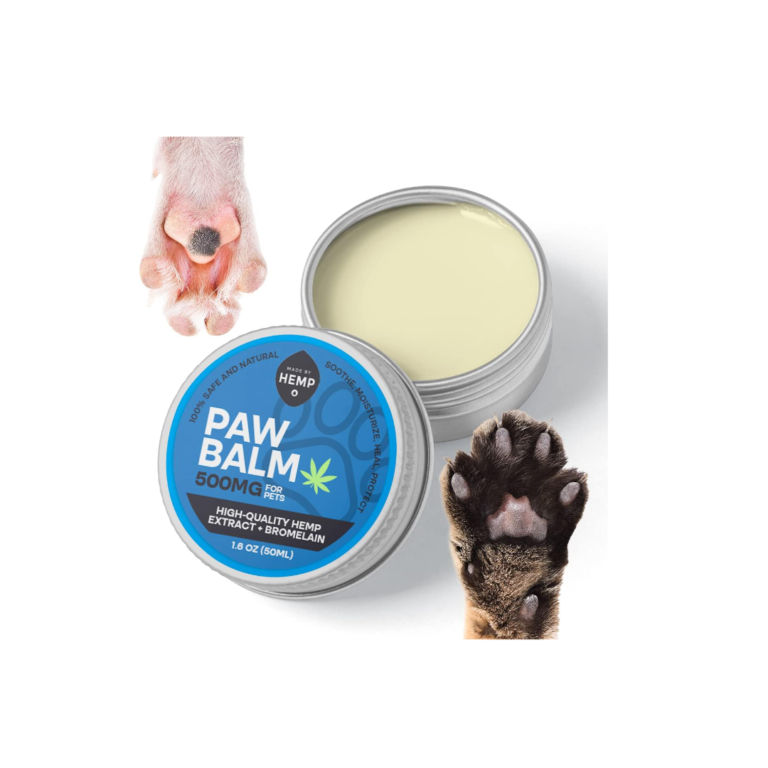Pet First Aid Essentials: What Every Owner Should Know
Pet First Aid is an essential skill that every pet owner should have. It can be the difference between life and death for your furry friend in an emergency situation. This article will cover the importance of pet first aid, common pet emergencies, and how to recognize signs of a pet emergency. We will also discuss how to build a pet first aid kit, where to store it, and how to regularly check and restock it. Additionally, we will provide basic first aid techniques for pets, including CPR, stopping bleeding, treating burns, and dealing with choking. Finally, we will explore common pet injuries and how to handle them, as well as when to seek veterinary care and what to do before going to the vet.
Key Takeaways
- Pet First Aid is crucial for every pet owner to know.
- Building a pet first aid kit with essential supplies is important.
- Knowing basic first aid techniques for pets, such as CPR and stopping bleeding, can save your pet’s life.
- Understanding common pet injuries and how to handle them is essential.
- Knowing when to seek veterinary care and what to do before going to the vet is important for your pet’s health.
Understanding Pet First Aid

Why Pet First Aid is Important
Pet First Aid: Equipping yourself with basic pet first aid knowledge can be invaluable. Knowing how to handle minor injuries and address common pet health issues can complement your CPR knowledge. Prepare a Pet First Aid Kit: As a responsible pet owner, having a pet first aid kit on hand is essential. The kit should include bandages, antiseptics, gauze, and other supplies for managing minor injuries until you can reach a veterinarian. Consult a veterinarian immediately in case of an emergency, it is often more valuable to contact a veterinarian immediately. They can guide you through the situation and provide professional assistance.
Common Pet Emergencies
In the event of a pet emergency, it is important to stay calm and take swift action. Bandages are a crucial item to have in your pet first aid kit. They can be used to apply pressure to wounds and control bleeding. When applying a bandage, make sure it is snug but not too tight to restrict blood flow. If the wound is deep or bleeding heavily, it is best to seek veterinary care immediately. Remember to regularly check and restock your pet first aid kit to ensure you have an adequate supply of bandages and other essential items.
Signs of a Pet Emergency
Recognizing a pet emergency is vital before proceeding to perform CPR. Signs of a pet emergency may include:
- Unresponsiveness: If your pet is unresponsive and not reacting to stimuli.
- Labored Breathing: Gasping or struggling to breathe.
- No Pulse: The absence of a detectable heartbeat.
- Choking: If your pet is choking and you are unable to dislodge the obstruction.
It’s important to be aware of these signs and act quickly in order to provide the necessary first aid to your pet. Remember, every second counts in an emergency situation.
Building a Pet First Aid Kit

Essential Items for a Pet First Aid Kit
When assembling your pet first aid kit, it’s important to include all the essential items to ensure you’re prepared for any emergency. Here are the key supplies that every pet owner should have in their kit:
- Storage container to store supplies
- Absorbent gauze pads to stop bleeding or to use as bandages
- Gauze roll to hold gauze pads and cotton wool in place
- Adhesive tape to secure gauze pads and roll
- Conforming bandage to cling to your pet’s body or limbs and apply pressure to wounds
- Cotton wool balls for bathing wounds and applying pressure to wounds
- Blunt ended scissors to cut gauze and adhesive tape, and to cut fur to better access any wounds
Remember, having these essential items readily available can make a significant difference in providing immediate care to your furry friend in times of need.
Where to Store Your Pet First Aid Kit
You’ll want to keep your kit in a place that’s easily accessible, and if you travel with your pets, then you’ll want duplicates. For example, if your dog regularly goes on outings with you, then it makes sense to keep a pet first aid kit in your vehicle in case Max cuts a paw on a sharp rock or has another emergency. The Pet Health Network reminds us that “Having the essentials to deal with an emergency will help you feel more secure and ready to care for your beloved pet. Please update your Pet First Aid Kit every 6 months to make sure you have everything you need, and medications
Regularly Checking and Restocking Your Kit
You’ll want to keep your kit in a place that’s easily accessible, and if you travel with your pets, then you’ll want duplicates. For example, if your dog regularly goes on outings with you, then it makes sense to keep a pet first aid kit in your vehicle in case Max cuts a paw on a sharp rock or has another emergency. Having the essentials to deal with an emergency will help you feel more secure and ready to care for your beloved pet. Please update your Pet First Aid Kit every 6 months to make sure you have everything you need, and medications are not expired. And remember to keep the kit out of the reach of children. Once created, a pet first aid kit can relieve the stress of an emergency. Will you start yours today?
Basic First Aid Techniques for Pets

CPR for Dogs and Cats
CPR on pets, whether dogs or cats, involves specific techniques and considerations. When administering CPR to a dog, begin by checking for breathing and a pulse. If absent, place your dog on their right side and initiate chest compressions. While dog CPR and cat CPR share similarities, such as checking for breathing and pulse, the techniques differ slightly due to the anatomical differences between dogs and cats. Gently tilt your cat’s head back to open the airway before performing rescue breaths. Pet CPR may require slightly modified hand positioning and compression depths based on the size and breed of the animal. WorldPoint provides resources and training materials tailored to pet CPR, ensuring pet owners are well-prepared.
How to Stop Bleeding
Bleeding can be caused by many factors. If possible, control it by applying pressure to the wound with your clean hands or a bandage. Here are other steps to reduce harm to your pet. Keep your pet warm and secure in a comfortable blanket to reduce shock. Disinfect animal bites. See your vet for antibiotics to prevent infection. Clean wounds and abrasions.
Treating Burns and Scalds
When it comes to treating burns and scalds in your pet, it’s important to act quickly and calmly. The first step is to remove your pet from the source of the burn or scald to prevent further injury. Do not use ice or cold water to cool the burn, as this can actually cause more damage. Instead, use clean lukewarm water or saline solution to gently flush the affected area. If the burn is severe or covers a large area, it’s best to seek veterinary attention immediately.
In addition to flushing the burn, you can also cover the area with a clean, non-stick bandage to protect it from infection. Avoid using adhesive tape directly on the burn, as this can further irritate the skin. If your pet is in pain, you can give them a pet-safe pain reliever as directed by your veterinarian.
Remember, burns and scalds can be serious injuries, so it’s important to monitor your pet closely and seek professional help if needed.
Dealing with Choking
Choking is a serious emergency that requires immediate action. If your pet is not breathing, it’s important to act fast. Carefully remove any visible obstructions in their throat, but be cautious if they’re awake to avoid getting bitten. To help dislodge objects in their airways, you can perform the Heimlich maneuver. If you can comfortably lift your dog, you can billow (squeeze and thrust their ribcage forward) to blow out the dislodged objects. For small pets, you can hold them upside down by their back legs and gently shake or deliver a blow to their abdomen. Remember, time is of the essence when dealing with choking, so it’s crucial to act quickly and confidently.
Common Pet Injuries and How to Handle Them

Fractures and Sprains
If you suspect your pet has a fracture or sprain, it’s important to handle the situation with care. Review the following steps to provide immediate aid:
- Keep your pet calm and minimize movement to prevent further injury.
- Gently examine the affected area for swelling, deformity, or signs of pain.
- If there is an open wound, cover it with a clean dressing to prevent infection.
- To immobilize the limb, you can set a temporary splint using materials like splint rolls or foam.
- Transport your pet to the vet for further evaluation and treatment.
Remember, it’s crucial to avoid putting pressure on the injured area and to keep your pet warm and comfortable during this time.
Wounds and Cuts
When it comes to treating wounds and cuts, there are a few essential items that every pet owner should have in their first aid kit. Gauze pads and adhesive tape are important for covering and securing the wound. You’ll also need blunt-ended scissors to cut gauze and tape, as well as to trim fur around the wound for better access. Sterile saline solution is crucial for flushing out wounds, eyes, or mouth to prevent infection. And don’t forget to wear protective gloves to keep your hands clean while treating the wound.
In addition to these basic supplies, it’s a good idea to have the phone number and address of your primary vet, closest vet clinic, and closest emergency vet on hand. This way, you can quickly seek professional help if needed. Lastly, consider having a storage container to keep all your supplies organized and easily accessible.
Here’s a table summarizing the essential items for treating wounds and cuts:
| Item | Purpose |
|---|---|
| Gauze pads | Covering and protecting the wound |
| Adhesive tape | Securing the gauze pads and roll |
| Blunt-ended scissors | Cutting gauze and tape, and trimming fur |
| Sterile saline solution | Flushing out wounds, eyes, or mouth |
| Protective gloves | Keeping hands clean while treating the wound |
Remember, having these supplies readily available can make a big difference in providing immediate care for your pet’s wounds and cuts.
Insect Bites and Stings
When your pet gets bitten or stung by an insect, it’s important to take immediate action to alleviate their discomfort and prevent further complications. Clean wounds and abrasions with a saline solution, and apply a clean dressing. If the injury is deep and needs further cleaning, it’s best to visit your vet. Remember not to attempt to remove penetrating objects, but shorten them if possible and get your pet to the vet. In case of apparent fractures, it’s recommended to have a vet tend to them, but you can set a temporary splint to keep the limb immobile. Lastly, keep your pet warm and secure in a comfortable blanket to reduce shock.
Poisoning and Toxic Substances
It’s important to be aware of the dangers of poisoning and toxic substances for your pet’s safety. Common signs of poisoning include vomiting, diarrhea, unusual stools, and seizures. If you suspect that your pet has ingested something toxic, it’s crucial to take immediate action. Here are the steps to follow:
- Call your veterinarian or a phone hotline like Pet Poison Helpline at 855-764-7661 or ASPCA Animal Poison Control at 888-426-4435.
- Do not induce vomiting unless instructed to do so by a professional.
Remember, quick action can make a difference in your pet’s well-being. Stay vigilant and keep toxic substances out of your pet’s reach.
When to Seek Veterinary Care

Determining if Your Pet Needs Veterinary Attention
If your pet is experiencing any serious injury or illness, they need to be taken to a veterinarian immediately. It’s important to act swiftly when you suspect your pet may be ill or injured. Contact your local vet immediately or your closest Animal Emergency Service hospital. For more information about what is and what to do in a pet emergency, visit our Pet Emergency Guide. Remember, time is of the essence when it comes to your pet’s health and well-being.
Emergency Veterinary Clinics
In case of a pet emergency, it’s important to know the nearest emergency veterinary clinic and have their contact information readily available. These clinics are equipped to handle urgent medical situations and provide immediate care for your pet. They have experienced veterinarians and specialized equipment to diagnose and treat a wide range of emergencies. It’s a good idea to have the address and phone number of the closest emergency vet saved in your phone or written down in a convenient location. This way, you can quickly access the information when every second counts. Remember, in an emergency, time is of the essence, so having this information easily accessible can make a significant difference in your pet’s outcome.
What to Do Before Going to the Vet
Before taking your furry friend to the vet, there are a few important steps you can take to ensure their safety and well-being. First, gather all necessary paperwork for your pet, including proof of rabies-vaccination status, copies of other important medical records, and a current photo of your pet in case they get lost. It’s also a good idea to have the phone numbers of your veterinarian, the nearest emergency-veterinary clinic, and a poison-control center or hotline, such as the ASPCA poison-control center (1-800-426-4435). Keep these numbers handy along with directions to the emergency-veterinary clinic. Additionally, make sure to bring a nylon leash and a self-cling bandage that stretches and sticks to itself but not to fur. If your pet tends to bite when they’re scared or in pain, consider bringing a muzzle or strips of cloth to prevent biting. Remember, it’s important to stay calm and reassure your pet during this time of stress.
When to Seek Veterinary Care
As pet owners, it is important to know when to seek veterinary care for our beloved furry friends. While some health issues can be managed at home, there are certain situations where professional help is necessary. If your pet is experiencing persistent symptoms such as vomiting, diarrhea, or difficulty breathing, it is crucial to consult a veterinarian. Additionally, any sudden changes in behavior, appetite, or mobility should not be ignored. At Whisker Wellbeing, we understand the importance of holistic and natural care for pets. We offer a variety of products, including CBD, hemp, and other natural options, all designed to enhance the physical and emotional quality of life of pets. Visit our website to learn more about our products and how they can benefit your furry friend.
Conclusion
In conclusion, being prepared with a pet first aid kit and basic pet first aid knowledge is essential for every pet owner. Having the necessary supplies and knowing how to handle minor injuries can make a significant difference in your pet’s well-being. Remember to consult a veterinarian in case of doubt or emergencies, as their professional guidance is invaluable. By taking these steps, you can ensure that you are equipped to provide immediate care and assistance to your beloved furry friend when they need it most.
Frequently Asked Questions
What is pet first aid?
Pet first aid refers to the immediate care and treatment given to a pet during an emergency or injury before professional veterinary help can be obtained.
Why is pet first aid important?
Pet first aid is important because it allows owners to provide immediate care to their pets in case of an emergency, potentially saving their lives or preventing further harm until professional help is available.
What should be included in a pet first aid kit?
A pet first aid kit should include items such as bandages, antiseptics, gauze, scissors, tweezers, gloves, and a pet first aid manual.
Can I use a human first aid kit for my pet?
While some items in a human first aid kit can be used for pets, it is recommended to have a separate pet first aid kit that includes specific items for their needs.
When should I seek veterinary care instead of providing first aid?
You should seek veterinary care instead of providing first aid when the injury or emergency is severe, such as major bleeding, difficulty breathing, broken bones, or ingestion of toxic substances.
How often should I check and restock my pet first aid kit?
It is recommended to check and restock your pet first aid kit every six months to ensure that all supplies are up to date and in proper condition.







